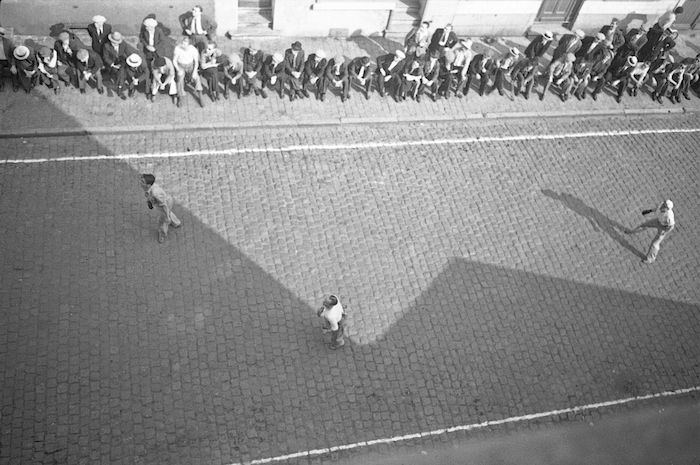
Pallimäng. 1948, Charleroi Fotograafiamuuseum, © Michel Lefrancq
Marcel Lefrancq was a curious and passionate man, and was closely linked to his era through his work. He grew up under difficult historical and social circumstances. Starting in 1938, surrealism for him meant active participation in the Rupture group in Mons – not to be confused with the group headed by Paul Nougé and René Magritte in Brussels. The Mons group later became the Surrealist Group of Hainaut (Groupe surréaliste de Hainaut), and Armand Simon, Achille Chavée, Fernand Dumont and Louis Van de Spiegele were among its members. Their objective was to “develop revolutionary awareness, help to form a proletarian message, and participate as much as possible in the development of the surrealist movement”.
As an artist who cultivated surrealism, he first became known for his collages. However, he soon discovered photography as a means of evoking his dream-like world, as well as the fears of the era, through strongly symbolic images. Following the example of other surrealists, for example Man Ray and Raoul Ubac, he created manipulated images and abstract pictures in the manner of automatic writing in his laboratory. Having a deep love for his home town of Mons, he photographed its residents, local customs and mysterious nocturnal atmosphere: a part of his work that is less known.
Starting in 1946, while working as a professional photographer under the auspices of the La Lanterne Magique studio, Marcel Lefrancq quickly acquired recognition as a portrait photographer. In this field he also demonstrated creativity, and considered it important to develop an understanding with his models, while also creating personal and opulent works of art, the complexity of which successfully reveal the humanist who drew inspiration from pre-history, folk heritage, Naivism and literature.
Curator: Xavier Canonne
The exhibition will be open until 6 November 2016.
Thanks to:
Charleroi Museum of Photography
Wallonie-Bruxelles International
























